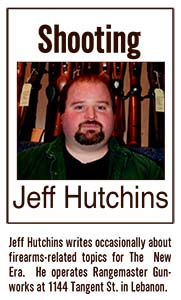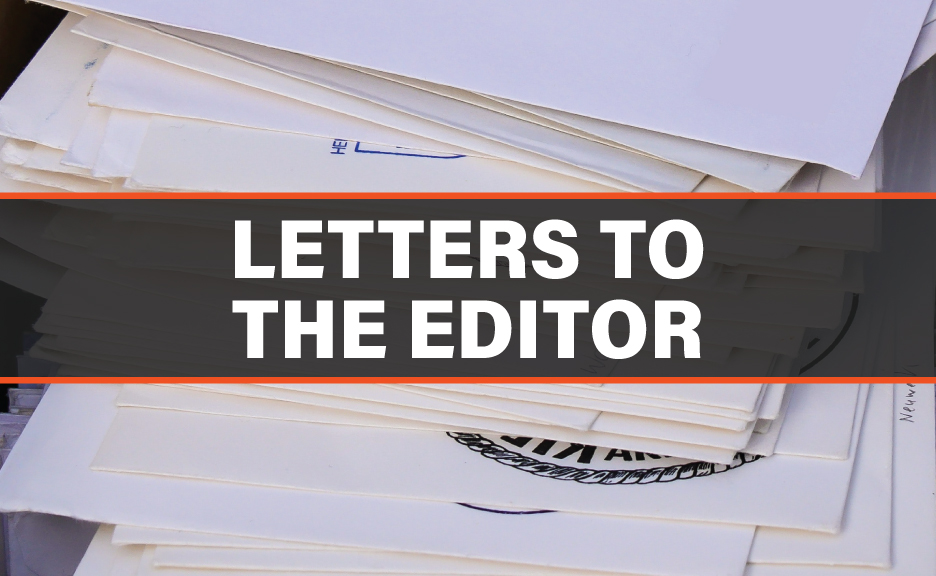In a previous column I reviewed the origins and military use of the 9mm cartridge.
This article will focus on its utilization by the police and civilians.
In the 1980s the vast majority of police departments in the U.S. issued a 9 mm pistol as their standard duty weapon. There was a perception (reality?) that the bad guys were becoming better armed and the police needed to keep up.
The “nine” became a status symbol with gang members and a standard of law enforcement.
I’m assuming anyone interested in this article enough to actually read it will not be offended by the subject matter.
I can’t think of any animal whose basic fundemental instinct is not self preservation and defense of its offspring – especially the higher functioning ones, and as humans we are at the top of the chain, as far as intelligence goes. We have developed tools to feed and defend ourselves and this article deals with the subject of those tools.
Back to the specific subject of this piece: There was one incident in 1986 that changed the mostly favorable reputation of the 9 mm and the “cure” hurt its reputation even more.
That incident has come to be known as the “Miami Shootout” and has had numerous articles and a couple of movies made out of it.
I’m going to condense the facts immensely for sake of space and say that out of the dozens of rounds fired by eight FBI agents and the two bank robbers, a single 115-grain 9 mm Winchester Silvertip was unfairly blamed for much of the later violence of that encounter.
This single bullet was a fatal injury but didn’t penetrate one of the bank robbers far enough to get to his heart and put him immediately out of the FBI agent killing business.
Luckily, one of the other agents eventually accomplished that task.
Seeing as how the failure seemed to be a lack of penetration, many agencies went with a heavier bullet whose increased momentum should logically provide increased penetration.
Winchester was seen as having the perfect solution in their 147- grain jacketed hollow point (JHP) load. The problem was that this round had been specifically developed for the military’s Special Forces’ sub-machine guns with sound suppressors (often erroneously called silencers).
The only reason these forces went with a heavy bullet is because, for the utmost “quietness,” the bullet should not exceed the speed of sound so as to not produce a super-sonic crack.
Another key to this specialized round is that the hollow point was never intended to expand. The only reason the bullet chosen for this role had a hollow point at all was for accuracy reasons.
Full Metal Jacket bullets (FMJ), which is what most military projectiles are, have an exposed lead core at the rear with the jacket kind of rolled over the heel. This is not the most accurate style for a bullet.
Having a nice square bullet base is a definite boon to accuracy and that is how JHP bullets are constructed. S
ince this load was intended for the clandestine elimination of sentries and/or sentry dogs, its accuracy was of utmost importance. And as head shots are the preferred method bullet expansion is unnecessary.
Since this cartridge was specified to not exceed 1,000 feet per second (FPS) out of a longer sub-machinegun barrel, it had dismal velocities in the standard 4- to 5-inch barrel of the average duty pistol.
On a sunny day you could actually see the bullet heading for the target like a BB out of an air rifle.
The unfortunate police officers who were saddled with this round had quite literally a terrible time with it. It had adequate penetration in many cases, but absolutely no expansion since bullets of the time pretty much had to attain 1,000 fps (preferably more) for reliable expansion. This added more fire to the “9 mms don’t stop fights” crowd.
The correct way to make an excellent performer out of the 9 mm is to make the bullets light and fast. All of the true, thinking experts figured this out decades ago.
Luckily about the time the 9 mm really got a foothold, companies like Cor-Bon produced 9 mm defense ammo that was, and is, the rival of any defensive caliber in existence.
This may be a little gruesome to contemplate, but if you hit a bad guy with a JHP bullet at relatively high velocity, it creates a pretty nasty wound cavity. The Cor-Bon loa,d for instance, usually breaks up after penetrating several inches and produces a lot of secondary “missiles” that branch out from the main wound tract and cause even more damage.
There is a common misconception by non-cops and non-gun owners that this larger wound is inhumane. The opposite is true.
If you can stop someone with one traumatic wound that shuts their body down, they have a better chance of surviving than if you use an ineffective round and have to create many wounds to achieve the same goal.
This is why every police agency in our country uses JHP or equivalent ammunition.
Another reason is officer survival; any sane person would rather see a police officer or law-abiding citizen comes out the victor in a deadly encounter with a criminal.
Now, I will say right here that if I were a uniformed police officer, I would not want to carry a 9 mm pistol. My first choice would be a .40 caliber or a .357 magnum revolver, in that order.
The reason is that many times police officers have to shoot into a vehicle. The attributes that make the 9 mm such a good defense round (with the right ammo) hurts it in this arena.
Light fragile/frangible bullets do not reliably penetrate auto bodies or glass (especially the laminated safety glass of windshields).
In fact, all of the best performing loads in every self defense-oriented handgun caliber except for the .357 are ineffective against cars.
The increased velocity and mass of cartridges like the .357 and .40 make them better candidates for an all-around duty load than the lighter bullet 9 mm or low-velocity .45.
For these reasons law enforcement must make difficult choices when choosing their duty ammo.
It must expand on a soft target, penetrate somewhat acceptably on a hard target, yet not over-penetrate a soft target and wound or kill an innocent bystander.
It’s tricky, but the American ammunition manufacturers have made leaps and bounds in this area.
In fact, Winchester even has a 9 mm load that is sold only to law enforcement and law enforcement distributors that does all of these things pretty darned well. It is in their Ranger line and is a bonded core 127-grain bullet loaded to +P+ levels.
That +P+ moniker is what makes it a law enforcement-only load; it is loaded hot and accelerates the wear in guns firing it. Therefore, it will never be a standard production/availability load from them for civilians, although it is perfectly legal to posses.
I’m sure there are many reading this article thinking I’m off my rocker, comparing the 9 mm to the .40, .45 and .357, but let’s take a look at some facts.
The hottest +P 9mm loads produce around 425 foot pounds of energy.
The .40 Smith and Wesson does about 525 and the .45 ACP (Automatic Colt Pistol) does around 525 as well in its +P versions.
The .357 Smith & Wesson Magnum milks around 550 out of a 4-inch barrel.
The average 9 mm holds 16 cartridges for 6,800 foot pounds. The average .40 holds 12 shots for a total of 6,300 foot pounds.
The revered 1911 .45 pistol holds nine rounds with modern magazines for an energy score of 4725.
And the poor old .357 usually only holds six, so it brings up the rear with 3300 ft. lbs of energy.
The thing to always keep in mind is that the bullet does all of the work and next to the placement of that bullet by the shooter, wise, informed ammunition selection is everything!
I can make a .380 outperform a .45 by making an excellent choice in ammunition for the little guy and a poor choice for the big bore.
The above examples are apples-to-apples comparisons; there was no advantage given to a “favorite” cartridge, as I like them all; but the 9 mm has an undeserved poor rating in many people’s eyes that is entirely incorrect.
Let us look at a few things the 9 mm does better than everything else: It is the cheapest centerfire pistol to shoo,t which will equal more practice, which will result in more proficiency.
It is a world-wide standard, so it is literally available everywhere and has been around for 109 years.
It has twice the power and half the recoil of the shorter .380 due to its locked-breach operation, compared to the blow-back operation of most .380 pistols.
The low recoil makes it an excellent choice for small pistols and people of small stature or limited strength.
With every state except one offering legal concealed carry to its law-abiding citizens, small pistols are extremely popular and the 9 mm makes nothing but sense in this platform.
The sheer efficiency of the 9 mm is endearing and amazing.
It’s relatively small, but powerful, almost the equal of its big brothers in raw energy and twice as much as the longer .38 Smith & Wesson Special.
It is half of the weight of the .45, yet has 81 percent of the .45’s power and half of its recoil. In a fully loaded pistol of similar size and weight it carries almost twice as much power as the .45 as well.
I’ve gone on entirely too long to go into great depth on this subject, but two veteran police officers have written what many consider the definitive book on Handgun Stopping Power. In fact, that is the title.
It is co-authored by Ed Sanow and Evan Marshall, who have scientifically examined thousands of real gunfights/shootouts. They use only cases where real people were in real fights for their lives with real weapons and real bullets were flying.
They only use cases where someone was shot once in the chest and only in the chest.
If that person basically immediately stopped fighting, that specific load in that specific caliber gets a “pass;” if not, it gets a “fail.”
I can think of no better way to judge a particular load’s effectiveness at its job and all of us that take our personal protection seriously, whether police or legally armed civilian, owe them a debt of gratitude as they put forth their efforts equally for both groups.
In their exhaustive studies, the best 9 mm loads are 91-92 percent “stoppers” (115 gr. Cor-Bon +P); the .45 is 94 percent (185 gr. Cor-Bon +P and 230 gr. Federal Hydra-Shok); the .40 is 96 percent (135 gr. Cor-Bon); and the .357 sits at the top at 97 percent (any full power 125 gr. JHP load) the king of all handgun calibers at ending gunfights.
The 9mm might have more going for it than any handgun caliber extant ,and it has to fight constantly against its detractors.
The funny thing is that this is the case only in the USA; everywhere else in the world it is considered more than acceptable, with nowhere near the selection of quality ammo that we have in this country. There is no controversy whatsoever.
I think we Americans have too many choices and are spoiled… Ain’t it great?




